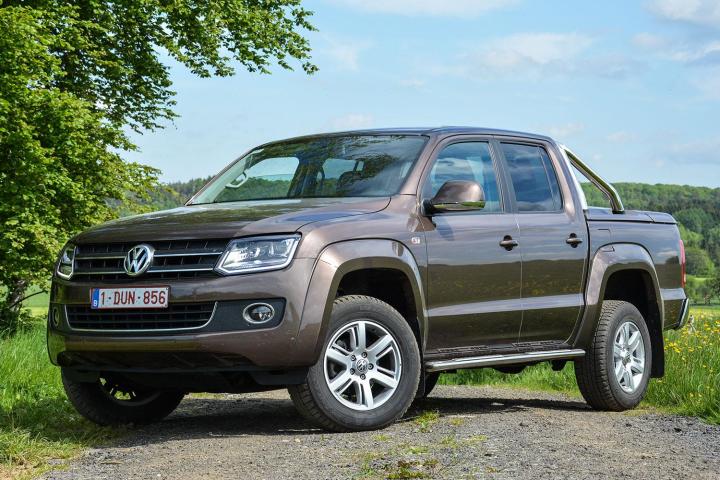
“There is some very serious development happening at the moment for an SUV based on Amarok, which will be quite a large passenger vehicle,” affirmed Carlos Santos, the commercial vehicles director of Volkswagen’s Australian arm, in an interview with Motoring. “It’s not confirmed yet but it’s been going on since the start of Amarok.”
If approved for production, the yet-unnamed model will ride on the same ladder frame as the Amarok (pictured), an architecture that will allow it to go farther off the beaten path than a car-based crossover, and tow considerably more. The SUV’s main engine will be a 3.0-liter TDI V6 borrowed from its pickup sibling. Rear-wheel drive and an automatic transmission will come standard, and all-wheel drive will be offered at an extra cost.
Other engines will be offered, of course. Volkswagen’s gasoline-burning 3.6-liter V6 is a prime candidate, and markets where gasoline is expensive (or those where large-displacement engines are heavily taxed) could have to settle for a turbo four. Ultimately, technical specifications will vary greatly from nation to nation.
The Amarok has never been sold in the United States for a variety of reasons that range from regulations like the Chicken Tax to a perceived lack of demand, according to the executives in charge of Volkswagen when the truck was developed. However, the SUV is being designed with our market in mind because Volkswagen knows that it needs to add more crossovers and SUVs to its North American lineup as fast as possible. Surprisingly, the U.S.-spec model could land with the aforementioned TDI engine.
“The discussion has been reignited because obviously this V6 engine is able to be sold in the U.S. The 2.0-liter would never get into the States, but the V6 is the same as the one in the Cayenne and Touareg and is a well proven engine. We’ve got the volume to justify the investment,” Santos pointed out.
Read more: Volkswagen Amarok driven
A timeframe for when we can expect to see the Amarok-based SUV hasn’t been provided yet. However, Volkswagen’s first body-on-frame pickup has entered the second half of its life cycle, so it’s reasonable to assume the family-friendly variant will arrive in the next couple of years if it’s given the green light for production.
Editors' Recommendations
- Microsoft’s new quantum chip could help control thousands of qubits
- Volkswagen’s celebrated Golf GTI returns with more power and new tech
- Ford could build its next Mustang-inspired electric car on Volkswagen bones
- New research could help Tesla’s EV batteries last for a million miles
- For Volkswagen, the electric ID.3 is more than a new car. It’s a new chapter



